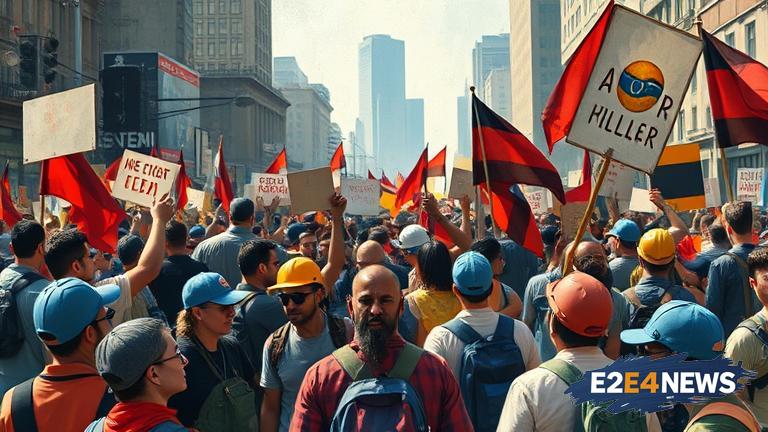The world has witnessed a surge in protests and demonstrations as workers from diverse industries and countries unite to fight against exploitation, inequality, and social injustice. The movement, which has gained momentum over the past year, has seen millions of workers take to the streets, demanding better wages, improved working conditions, and greater social protections. In the United States, workers from the service sector, including fast food workers, retail employees, and hospitality staff, have been at the forefront of the movement, organizing strikes and protests to demand a living wage and decent working conditions. Similarly, in Europe, workers from various sectors, including manufacturing, transportation, and healthcare, have been protesting against austerity measures, privatization, and the erosion of workers’ rights. In Asia, workers in countries such as China, India, and Indonesia have been fighting against sweatshop conditions, low wages, and poor working conditions. The protests have also highlighted the issue of income inequality, with workers demanding a more equitable distribution of wealth and an end to the exploitation of the working class by corporate elites. The movement has been marked by a sense of solidarity and unity, with workers from different countries and industries coming together to support each other’s struggles. The use of social media has played a key role in mobilizing workers and coordinating protests, allowing workers to share their experiences, organize actions, and build a global network of support. Despite the challenges and obstacles faced by workers, the movement has achieved significant victories, including the passage of legislation to increase the minimum wage, improve working conditions, and protect workers’ rights. However, the struggle is far from over, and workers continue to face significant challenges, including the opposition of corporate elites, government repression, and the erosion of workers’ rights. The movement has also highlighted the need for a more fundamental transformation of the economic system, one that prioritizes the needs and interests of workers and the broader community, rather than the profits of corporate elites. As the movement continues to grow and evolve, it is likely to have a profound impact on the global economy and society, shaping the course of history and determining the future of work and social justice. The protests have also sparked a wider debate about the nature of work, the role of technology, and the impact of globalization on workers and communities. Furthermore, the movement has highlighted the importance of international solidarity and cooperation, as workers from different countries and industries come together to support each other’s struggles and build a global movement for social justice. In addition, the protests have raised important questions about the role of government and the state in regulating the economy and protecting workers’ rights. The movement has also sparked a renewed interest in the history of labor struggles and the role of workers in shaping the course of history. As the movement continues to unfold, it is likely to have a profound impact on the global economy and society, shaping the course of history and determining the future of work and social justice. The protests have also highlighted the need for a more nuanced understanding of the complex relationships between workers, capital, and the state, and the ways in which these relationships shape the lives and experiences of workers. Moreover, the movement has underscored the importance of building a global movement for social justice, one that prioritizes the needs and interests of workers and the broader community, rather than the profits of corporate elites. The movement has also sparked a wider debate about the nature of democracy and the role of workers in shaping the course of history. In conclusion, the global protests and demonstrations by workers are a testament to the power and resilience of the working class, and a reminder that the struggle for social justice and workers’ rights is far from over. The movement has achieved significant victories, but it also faces significant challenges, and it will require continued solidarity, organizing, and struggle to achieve a more just and equitable society. The future of work and social justice hangs in the balance, and the outcome will depend on the ability of workers to build a global movement for social justice, one that prioritizes the needs and interests of workers and the broader community.
